40 Difference Types of Calathea
Calathea types are fascinating home plants because they are so diverse and beautiful! Calathea plants are famous for their ornamental foliage, and some varieties may be difficult to distinguish. But, here is the ultimate guide that will help you identify the most stunning varieties of Calathea and choose which one(s) to grow!
Moreover, you can find fascinating information about the plants alongside useful tips for growing these tricky plants.
Calathea is also one of the collectors’ favorite plants. So if you are interested in collecting Calatheas, please check if you’ve got all the varieties from my list!
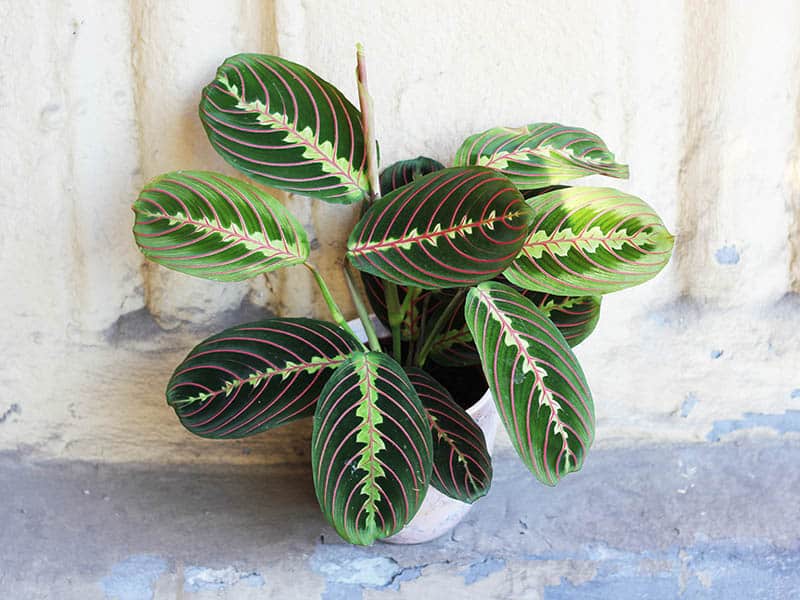
1. Calathea Rattlesnake Plant
Calathea lancifolia is better known as the Rattlesnake plant, because of the unique patterns on the foliage and purple leaf undersides. The plant grows easily when planted in spring in a medium-size pot with excellent drainage. When caring for Rattlesnake Calathea, dust the leaves often to ensure the maximum effects of photosynthesis.
2. Calathea Rose-Painted
Calathea roseopicta or Calathea Rose-painted is one of the most attractive varieties on the list. It is native to Brazil and usually grows up to 20 inches. Rose-painted Calathea has purplish leaves with striking patterns and the summer blooms only increase the plant’s visual interest! The plant loves semi-shaded spots and moist soil!
3. Calathea Orbifolia
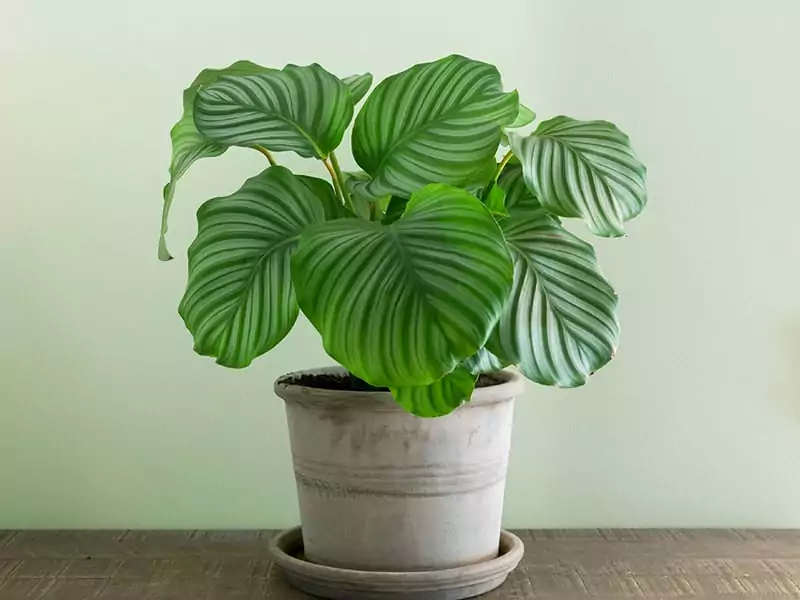
Calathea Orbifolia is a common houseplant with sophisticated leaves and simple maintenance. It is also one of the most striking Calathea types because of the large size and bold foliage. The trick to keep Calathea Orbifolia looking fresh and beautiful is to provide moist soil and high humidity! Otherwise, the leaves may start drooping or fading. In simple words, Calathea Orbifolia likes jungle-like conditions – warmth, filtered light and high moisture!
Calathea Orbifolia cannot survive without these tips.
4. Calathea Pinstripe
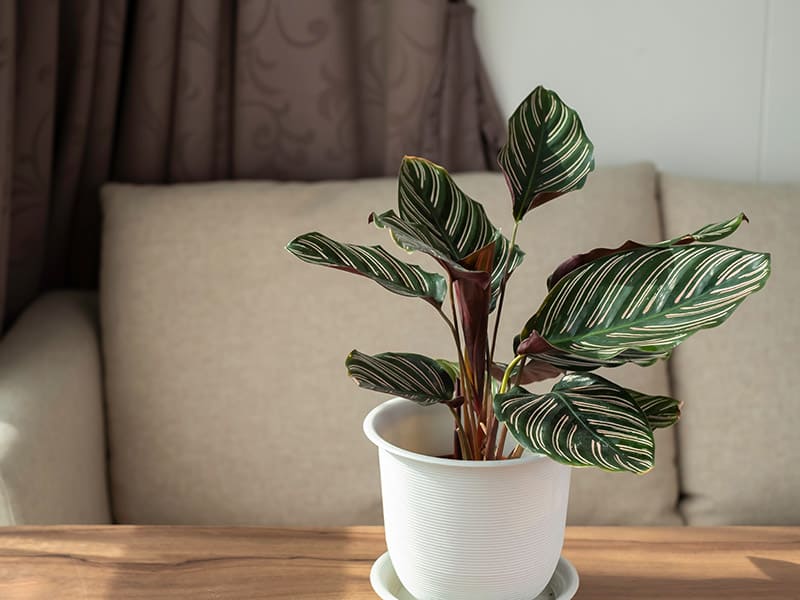
Calathea Ornata is known under the name Pinstripe Calathea because of the symmetrical pink stripes, which are clearly visible on the foliage.
Pinstripe Calathea is tricky to grow because it can be difficult to ensure enough water and sunlight. Keep the soil moist, but not soggy and expose the plant to bright light, but filtered.
5. Calathea Peacock
Calathea makoyana is native to Brazilian tropical forests! Collectors look for this plant because of its unique beauty and tricky nature. The plant has colorful foliage, hence the common name Peacock plant.
When caring for the Peacock plant, consistent warmth is key to keeping the plant healthy. Fertilization is also recommended, especially during the growing season.
6. Calathea Zebra
Calathea zebrina or Zebra is a popular Calathea variety. The plant is easily recognizable by the striking leaves.
It thrives in well-drained, fertile and consistently moist soil. Ideally, the humidity should be above 60%, and the temperature shouldn’t drop below 65 degrees Fahrenheit.
A step-by-step guide for propagating Zebrina Calathea.
7. Calathea Eternal Flame
Calathea crocata is called Calathea Eternal Flame, and the plant is grown because of the beautiful foliage and showy yellow flowers. The plant adds a uniquely exotic and colorful vibe to the place and is relatively easy to grow.
Even though it is native to Brazil, it is slowly becoming an endemic variety because of the rising environmental changes. Warmth and humidity alongside bright, filtered sunlight are ideal conditions for Calathea Eternal Flame.
8. Calathea Jungle Velvet
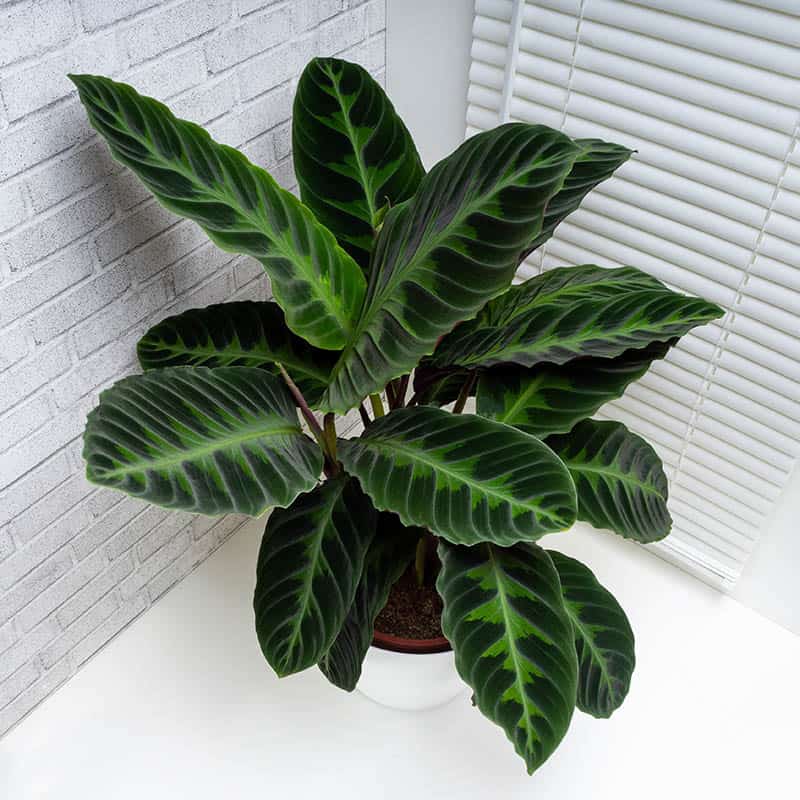
Calathea warscewiczii is an impressive indoor plant to grow. It features attractive flowers and colorful leaves with velvet textures! If you provide good care for the plant, it will remain good-looking year-round.
The plant needs a lot of moisture during the growing season, from April to October. After that period, limit the water intake and don’t let the temperatures drop below 65 degrees Fahrenheit.
Learn how compost can help you Calathea Jungle Velvet!
9. Calathea Medallion
Calathea veitchiana or Calathea Medallion doesn’t like direct sunlight. If you keep the plant under bright light for too long, the leaves may get burnt. Also, never soak the plant in water, because it can cause roots to rot. Overall, Medallion Calathea is a great indoor plant because of its beautiful appearance and low maintenance.
10. Calathea Network
Calathea musaica is also called Network Calathea because of the green lines on the foliage, which looks like code. The leaves are stunning green and they instantly brighten up every space and add a slight urban jungle vibe.
It grows slowly and doesn’t like often repoting.
11. Calathea White Fusion
Calathea lietzei or White Fusion plant is a proud member of the Calathea species. It has stunning green-white foliage and it is an extremely popular collector’s plant. However, it can be difficult to find in nurseries. Also, it is more expensive than most other Calathea types.
The plant needs a lot of sunlight to maintain healthy foliage, but it needs to be filtered to prevent burns. Also, keep the soil moist for best results.
12. Calathea Furry Feather
Calathea rufibarba is better known under the Furry Feather name. It is a true jungle plant and a statement plant! The Furry Feather variety is also one of the easiest Calatheas to grow.
It can survive semi-shaded areas and short drought periods. But, to thrive it needs warmth, consistent watering and regular misting which will improve the humidity.
Check out the comprehensive growing guide for Calathea Furry Feather.
13. Calathea Freddie
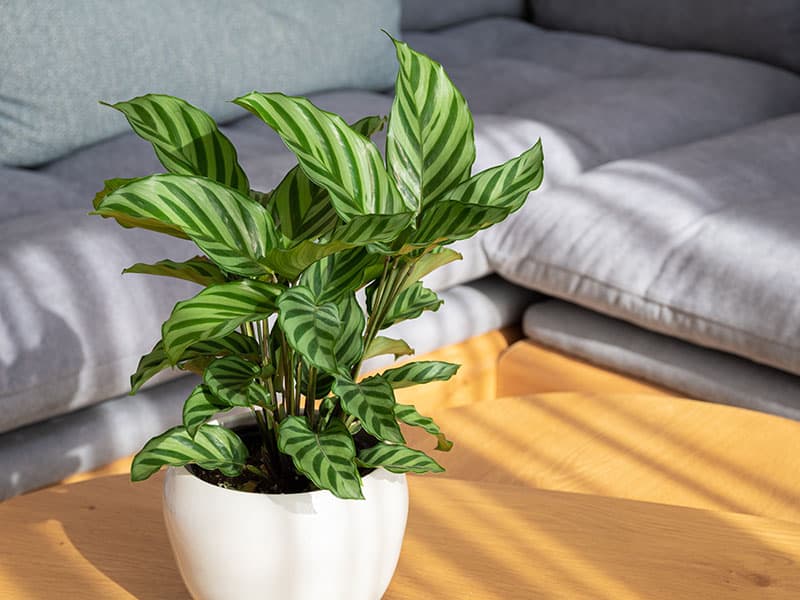
Calathea Concinna or Freddie plant is another Calathea native to Brazil. It has slightly less striking foliage than most other varieties, but the sophisticated appearance and bright green leaves make the plant very popular.
Freddie Calathea tolerates temperatures above 60 degrees Fahrenheit. Also, the plant doesn’t need a regular dose of fertilization which makes it simple to grow.
14. Calathea Beauty Star
Calathea Beauty Star is worthy of its name! The stunning leaves feature different shades of green, and some of them are almost fluorescent!
The plant has an upright growing habit and usually grows around 24 inches indoors. In the plant’s native habitat, a Beauty Star can become two feet tall.
15. Calathea Louisae Misto
Calathea louisae Misto features large leaves with light green centers. The ideal temperature range for the plant is between 65 and 85 degrees Fahrenheit.
If you want to boost the growth, apply well-rounded liquid fertilizer in late spring and through summer. Learn more tips for growing the most stunning Calatheas!
16. Calathea Watery Bijagua
Calathea marantifolia or Watery Bijagua Calathea is a rare Calathea variety without stripes on the leaves. Instead, the plant has a unique texture and features glossy, dark green leaves. During the blooming season, charming yellow flowers appear to give the plant an even more beautiful look!
17. Calathea Bachemiana
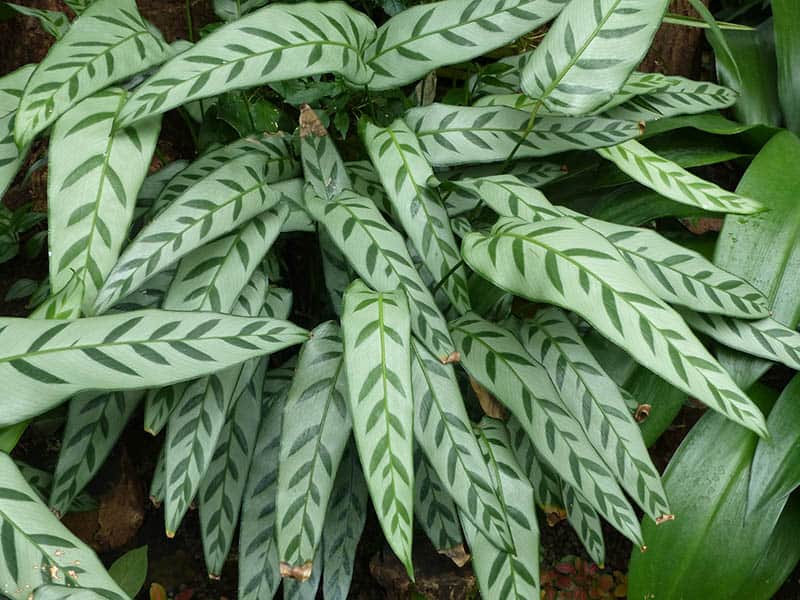
Bachemiana Calathea has long and narrow grayish leaves with dark green markings. The foliage almost looks painted! It is a lovely tropical plant, which needs a bit of care and love to look the best.
Bachemiana needs filtered light and warm temperatures. You can plant it in spring and use fertilizer until fall to ensure maximum growth. It is a compact plant, perfect for small areas.
18. Calathea Brazilian Star
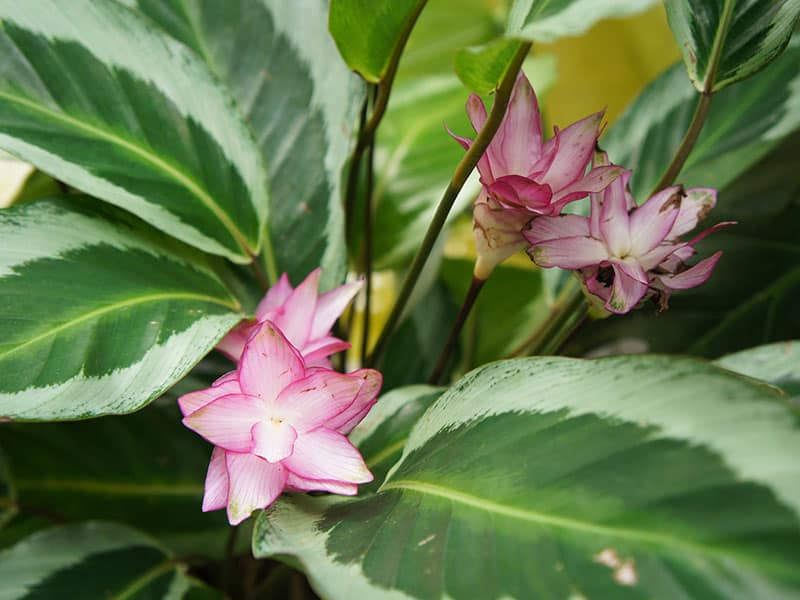
Calathea loeseneri or Brazilian Star Calathea is best-known for its charming, shy white and pink flower! It grows in the tropical forests of Brazil and Ecuador under larger trees. So the bright sunlight won’t burn it.
The soil needs to stay moist and well-draining for this Calathea to grow.
Discover if Brazilian Star can survive in the shade.
19. Calathea Klotzsch
Calathea latifolia or Klotzsch is a wild, tropical plant, which gets up to four or five feet tall. It is a common plant you can see near the road in Panama. In the native area, the plant remains vivid green from July through December!
People also call it the Bijao plant.
20. Calathea Corona
Calathea Corona is a lovely plant that features silver leaves with dark green borders and red undersides.
The plant needs moist soil and indirect light to grow to its full potential!
21. Calathea Vittata
Calathea Vittata is a compact and attractive houseplant. It has vivid green foliage with striking white stripes.
It is an easy plant to grow, suitable for beginners as long as you pick a good spot for the plant. Without enough sunlight, the leaves may turn yellow or start drooping. The basic care includes frequent watering and the occasional use of balanced fertilizer.
22. Calathea Lutea
Lutea is different from other low-growing Calathea varieties. It gets very tall, above ten feet. It is the perfect plant for landscaping in warm and humid climates. The plant tolerates a lot of sunlight, but some shade is still recommended, especially in the afternoon.
23. Calathea Silver Stripe
Calathea Micans or Silver Stripe Calathea has bright green, glossy foliage with a light green stripe in the leaf center. The evergreen leaves are oval and somewhat bold.
Choose a semi-shade location for the plant. The ideal soil type for the Silver Stripe plant is sandy loam or sandy clay. It is one of the cold-hardy Calatheas, which makes it perfect for the patio!
24. Calathea Lubbersiana
Elegant Calathea Lubbersiana grows up to 18 inches and is mostly grown for its ornamental leaves.
The foliage is green with yellow patterns and light green undersides. When you take good care of the plant, the shades become bright and the texture gets glossy. Similar to other Calathea varieties, Lubbersiana also loves warmth and high humidity.
Check out the best tips for propagating Calathea plants!!
25. Calathea Majestica Whitestar
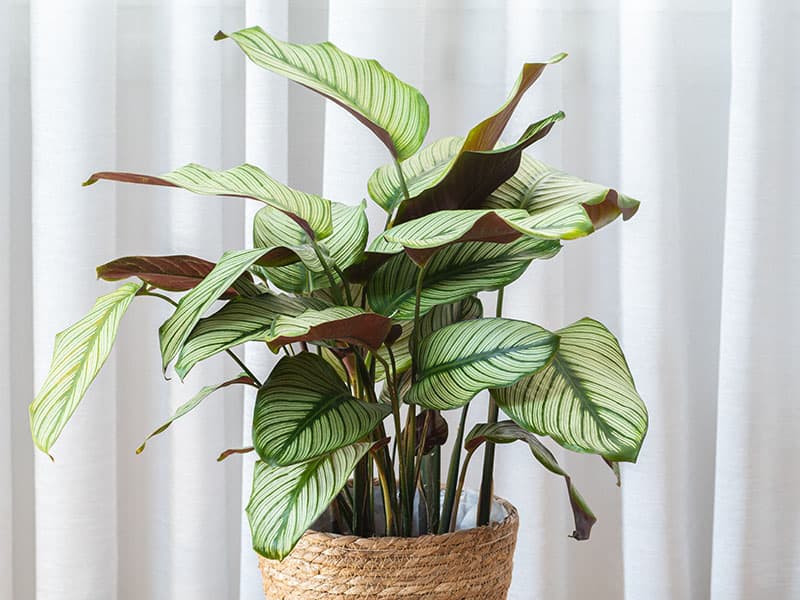
Calathea Majestica Whitestar is a gorgeous plant with its showy leaves with pink and white stripes. The plant is native to Columbia and Brazil and can be slightly difficult to find in local nurseries.
Majestica Whitestar needs a bright spot, but away from direct afternoon sunlight. Other growing conditions don’t differ from the ones that apply to indoor Calatheas.
Calathea isn’t fussy if you know what the plant needs.
26. Calathea Oppenheimiana
Calathea Oppenheimiana is taller than most Calatheas. It usually reaches up to three feet in a hot and humid environment. Oppenheimiana features green striped leaves with purplish undersides and stems!
Keep the plant away from direct sunlight and it will make your garden stand out!
Discover more interesting names of the Oppenheimiana plant.
27. Calathea Fasciata
Fasciata Calathea is a low-growing indoor plant with a not very demanding nature. It grows fine in most indoor conditions, as long as you protect it from direct sunlight, cold temperatures and draft. Pick a good pot with large drainage holes and use fertilizer occasionally to help the plant establish as soon as possible.
28. Calathea Ecuadoriana
Calathea Ecuadoriana is an endemic species in Ecuador. The plant is native in subtropical and tropical forests and thrives in warm and humid environments. Ecuadoriana also grows well in semi-shade spots, and the leaves develop stunning velvety texture.
Water Ecuadoriana with distilled water. Remember the tip for all other Calathea plants!
29. Calathea Burle Marx
Burle Marx Calathea loves shade, but an ideal place for it is a spot with slight exposure to morning sunlight. If you want to grow it indoors, pick an east-facing window.
The plant is sometimes called the Fishbone plant because of the striking pattern on the leaves.
30. Calathea Albertii
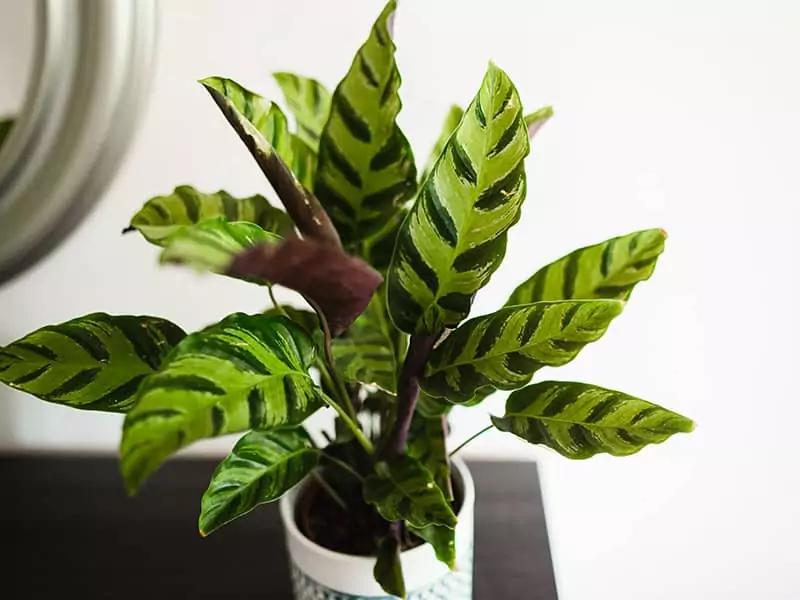
Don’t let Calathea Albertii dry between waterings. Drought can cause irreparable damage to your plant. In most environments, watering your plant once a week will be sufficient to keep the foliage healthy.
The ideal soil for Albertii Calathea is rich peaty soil with excellent drainage. Medium-light exposure is recommended for Albertii Calathea.
31. Calathea Picturata Argentea
Tropical Argentea has silver leaves with green borders and purplish undersides. The plant is grown for ornamental foliage. Argentea also produces lovely white flowers!
It needs moist and free-draining soil, warm temperatures and partial sun exposure!
32. Calathea Truncata
Truncata comes from Brazil and it is a compact evergreen plant. Because it loves shade, you can grow in areas where other plants won’t succeed! Plant it in sandy loam and watch your plant thrive!
33. Calathea Helen Kennedy
Calathea Helen Kennedy is one of the rarest and most desirable Calathea varieties. If you get your hands on the plant, never let it go! It has striking ovate leaves with unusual light and dark green patterns. The plant needs regular fertilization to grow.
Read the story about the impressive female botanists Helen Kennedy which discovered the variety!
34. Calathea Pink Aurora
Delicate Pink Aurora Calathea is worth every effort you’ll put in to make the plant survive! Pink Aurora can suffer from common Calathea problems.
It features pale pink, almost white leaves with a pinkish hue around the veins. The plant needs moist soil, and high humidity to survive. Keep it away from direct sunlight if you want to prevent burnt leaves!
35. Calathea Wiotii
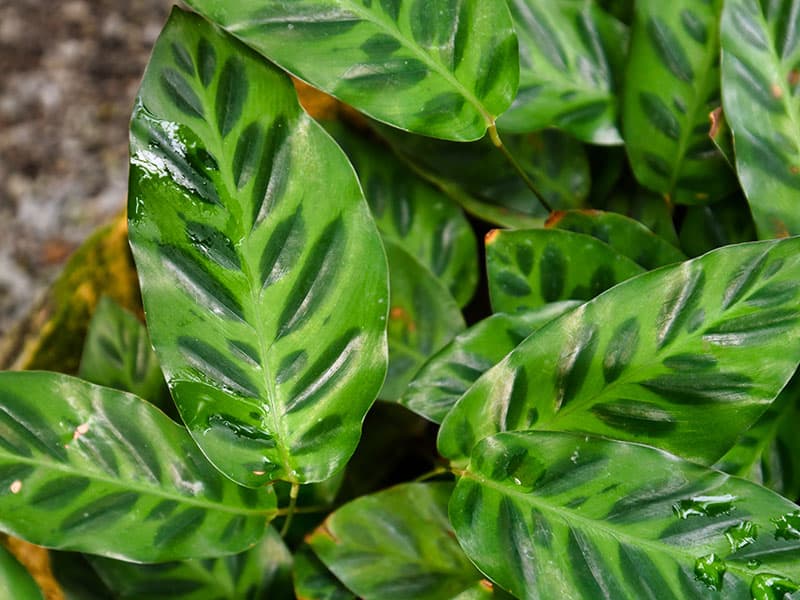
Calathea Wiotii is one of the smallest Calatheas, and can be a great housewarming gift! The plant needs frequent watering, but the soil needs to be loose to ensure good drainage and prevent rotting.
36. Calathea Fucata
If you are a serious collector, you probably have Calathea Fucata on your wishlist! Because it is a tropical plant, it needs a warm and humid environment to thrive. The plant is cold-sensitive so you need to keep the area above 65 degrees Fahrenheit for the plant to grow. Ideally, Calathea Fucata should be kept in a greenhouse!
37. Calathea Silver Plate
Calathea Silver Plate grows between one and three feet in the soil in tropical climates. When you grow it indoors, Silver Plate Calathea gets significantly shorter.
The plant is easy to identify because of the huge light green leaves, with dark green margins and burgundy undersides! One of the top features of the plant is its air-purifying capabilities!
38. Calathea Undulata
Calathea Undulata is probably the smallest Calathea you’ll find. The plant grows in Peru and features dark green foliage with striking silver patterns. Rarely, Undulata Calathea grows above ten inches.
With Undulata, you can use fertilizer to keep the plant healthy.
39. Calathea Macrosepala
Calathea Macrosepala is one of the rare Calatheas that is more popular because of the flower and not the foliage. The plant is native to Mexico and Ecuador and has true-green leaves with a slight texture. Interestingly, Macrosepala has edible roots and flowers!
The roots and flowers are used in various recipes for tropical cuisines.
40. Calathea Roseopicta Dottie
Dottie is a popular cultivar of Roseopicta Calathea. It features dark green leaves with pink veins! If you plan to travel often and leave the plant alone, you should skip Dottie. It needs frequent watering and loose soil to establish roots. Dottie also prefers hot and humid rooms, and it can grow well in the bathroom!
Her Majesty The Stunning Calathea
As you can see, there are so many unique Calathea varieties with distinctive foliage. Some of them also have lovely flowers and interesting features such as air purification or edible parts!
Which Calathea is your favorite? I cannot make up my mind between gothic Dottie Calathea and paste Whitestar!
If you enjoyed the article, consider sharing it with your friends!

